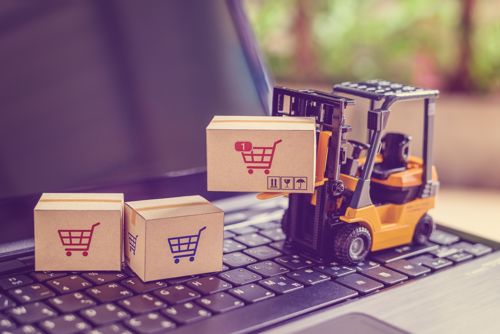Appropriately for an industry that is all about moving items from one place to another, the logistics sector is not standing still — it’s constantly changing. In 2020 alone, the economic shutdowns to control COVID-19 forced many companies to rapidly realign their supply chains with sudden drops (or spikes, in some cases) in customer demand.
The International Financial Corporation’s (IFC) comprehensive report on these adjustments — “The Impact of COVID-19 on Logistics” — highlighted trends such as the dramatic drop in flights per day and the immense pressure on small logistics providers, both of which forced companies to get creative about how they fulfilled orders.
Looking ahead to 2021 and beyond, what logistics trends must companies adapt to in order to keep up with the competition? Let’s look at three actions that support superior logistics.
1. Save money and boost performance with shorter supply chains
Globe-spanning supply chains were once the norm, and they still dominate many industries today, including consumer electronics, due to the perceived value they offer in terms of low prices for customers. However, companies are beginning to reassess what “value” means in terms of their logistics processes, as American Express pointed out in a June 2020 supply chain-focused blog.
More specifically, they’re thinking about minimizing exposure to risks like trade tensions and pandemics as well as reducing their carbon footprints, among other considerations. In this regard, shifting to shorter supply chains that are closer to where goods are actually consumed can be both a cost-saving measure and way to improve overall supply chain performance.
Short supplier chains reduce transportation costs and may help reduce disruptions and delays that disappoint customers. Because the latter can so negatively impact company reputation, any move that makes the supply chain more reliable — like shortening it — can pay for itself in the long run by improving customer satisfaction.

Recent economic challenges have highlighted the need for organizations to reassess their logistics management. Here are 3 trends to help you stay current and competitive.
2. Improve the customer experience, especially for virtual shopping
Commerce has been moving from brick-and-mortar outlets to online retailers for decades, but its growth really accelerated in 2020. Per eMarketer, ecommerce sales will climb 32.4% year-over-year, reaching a level that the firm had previously expected them to reach by 2022. Excluding automobiles and gasoline, ecommerce will account for 20% of all retail sales in the U.S. in 2020.
The online shift has major implications for every aspect of logistics, from how a company designs its ecommerce website to which logistics providers it partners with to fulfill the resulting orders. Some of the specific areas that may need new attention include:
- Website optimization: Is the company website mobile-friendly, free of bulky banners and capable of displaying easy-to-find “add to cart” and search buttons?
- 3PL relationships: Fulfillment via a 3PL is often more cost-effective than doing it in house. Not only does it save a company the expense of setting up its own division, it can also lower shipping costs for customers.
- Subscription management: Offering incentives for subscribing, such as making certain items subscription-only and offering rewards, can improve the customer experience, while also helping to make demand somewhat more predictable by requiring customers to sign up with an account first.
3. Increase profitability by improving visibility
Comprehensive supply chain visibility is essential for meeting customer expectations, maintaining regulatory compliance and managing the overall complexity of modern logistics operations. But when critical information is spread across multiple systems and not tightly integrated, it becomes difficult for organizations to know what is actually happening across their operations and whether they have the strategic capacity to deal with changes in supply and demand.
The implementation of solutions such as Oracle Transportation Management (OTM) and Warehouse Management Cloud (WMS) can transform how companies handle their orders, warehouse operations and overall execution. Inspirage has guided multiple customers throughout the process of making their logistics processes more scalable and economical. Here are a few examples:
- AMES, the garden and landscape tool maker, used Oracle Transportation Management Cloud and Warehouse Management Cloud to create a scalable system able to handle high volume, a reduction in TCO, the elimination of custom code, cost savings and an integrated logistics platform.
- Boar’s Head was able to gain visibility for planners and users, reduce shipping costs and make better decisions regarding carriers with OTM Cloud. The end result of these efforts is an increased focus on their customers – instead of their systems.
- Land O’Lakes moved their on-prem transportation management processes to Oracle’s Transportation Management and Global Trade Management Cloud platforms and introduced an integrated system for managing their transportation needs and ensuring trade compliance for international shipping.

To learn more about how Inspirage has worked together with our customers on this logistics projects and more, visit our resource library. You can also contact our team of Oracle team experts directly.